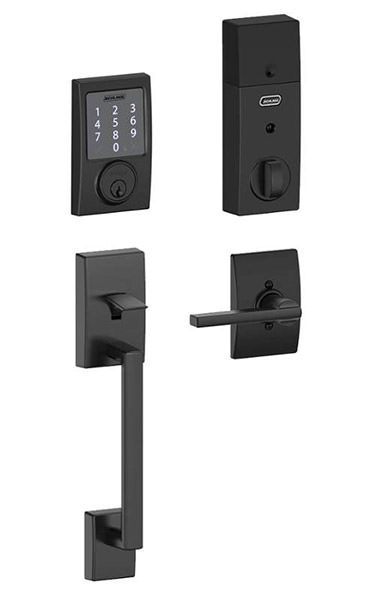
 Welcome to Home Automation Week at Blogography!
Welcome to Home Automation Week at Blogography!
One thing you find out very quickly when researching home automation solutions is that everybody has an opinion as to what's best. You're never going to find that one flawless technology that everybody universally loves. Which means making a decision can be a tricky business indeed. You have to weigh all the opinions and reviews so you can find the solution that feels like the best fit for you.
I'll just cut to the chase and say that I ultimately decided on INSTEON for the bulk of my home automation tasks.
Yes, there were some reviewers saying that INSTEON is crap, but there was enough good things said about the types of things I was wanting to do that it seemed the best solution.
One thing I really liked about INSTEON was the dual-mesh networking technology they've got going on. Many of their devices are wireless, but that can be problematic because low-power wireless devices don't have a lot of range. But INSTEON also has networking-over-power lines for many devices, which means your network is instantly extended via reliable hard-wired connections anytime you plug a device into an outlet.
So while that open/close sensor on your window may be battery-powered and have limited range over low-powered wireless... that light switch three feet away is wired into the electrical system and acts like an extender to the sensor, so no problem at all.
And speaking of light switches...
My new INSTEON light controllers are ever so dreamy!
Thanks to the INSTEON Hub, you can control your lights from anywhere your smart phone has internet access. You can also monitor what's on and what's off. You can also link light switches together. And, of course, you can program schedules easily. My front and back porch lights automatically turn on at sunset and turn back off at sunrise, for example. You can use INSTEON motion detectors to talk to the lights and have dark rooms light up automatically. You can pretty much do whatever you want so long as there's an INSTEON device to make it happen. And there are a lot of INSTEON devices available.
But, alas, all is not perfect...
The INSTEON "smart" switches are much, much larger than traditional light switches. They take up a lot of space. Which means if you have shallow electrical boxes throughout your home, the odds of the switches actually fitting into them are remote. Even if there is enough room to cram the switches into the box, that may not be a good idea, as it will involve smashing all the wiring to the back of the box with a hammer. I'm not an electrician, but that didn't seem like a very good idea. Won't heat build up and melt your switches? Or, worst case scenario, start a fire if the electricity arcs in there?
I dunno. But it's not a risk I'm willing to take.
So... I either replace all my electrical boxes with something deep enough to handle the new switches (a positively massive undertaking that will involve cutting into walls)... or I give up on automating my lights.
Except... my dad offered another solution when I told him of my dilemma... a box extender.
Usually box extenders are used for when you add tile or some other thick product to your walls and the electrical box ends up too deep for the switch plate screws to reach. That wasn't my problem, so I had to find a solution which would extend the boxes out from the wall.
I figured with all the home automation going on, there would be a plethora of solutions out there to do just that.
I was wrong.
After hours of research, I was able to find just one.
One.
Which I'll save for tomorrow's discussion.
Along with INSTEON's efforts to make their system Apple HomeKit compatible.
 Welcome to Home Automation Week at Blogography!
Welcome to Home Automation Week at Blogography!
As I mentioned yesterday, trying to tie my home automation project to a single vendor was doomed to failure. So I decided to split the tasks between two vendors along a logical divide... one company for monitoring stuff and one company for acting on stuff. Simple, right?
Yes. Kinda. Maybe.
Except... no. Not really. After a lot of false starts, I realized it doesn't really divide out like that.
And so I decided to stop worrying about how many companies it took to get what I wanted and just get what I wanted. Which, after weeks of research, actually ended up being a pretty good idea.
Starting with the door locks...

The one area where Apple's HomeKit came through for me was door locks. Out of the dozen or so that are available, Schlage's "Sense" was the solution I liked best. It's not an add-on that sits on top of your current lock, but a complete deadbolt replacement. You can use a key to lock/unlock. Or you can use the keypad. Or you can use your iPhone. Or, since it's HomeKit compatible, you can tell Siri what you want. It can handle multiple entry codes and has a "tamper" alarm if somebody tries to take a hammer to it. Supposedly it can be controlled remotely (out of Bluetooth range) via AppleTV, but I can't get that to work. Perhaps eventually I'll get that part figured out, but it's not so important to me just now.
The one "feature" I did NOT want was auto-unlocking when you walk up to the door with your phone. This kind of proximity unlocking may sound convenient, but I didn't like the idea from a security standpoint. Schlage Sense doesn't have it, which was actually a plus for me.
Once I reset the door jamb strike plates back so that the lock opened/closed effortlessly when the door was closed, installation went perfectly.
On the first door.
On my two other exterior doors, I couldn't get the tab on the lock assembly to line up with the slot on the deadbolt turn. This was incredibly frustrating, and I had to place a call to Schlage support to find out why in the hell my locks were built upside-down. Turns out they weren't... they just weren't aligned properly. Using a screwdriver (and more pressure than I was comfortable with) you can force the slot to rotate 180° so everything lines up. Why in the hell they couldn't put that in the manual is beyond me, but all's well that ends well.
Except, as you can probably guess, this wasn't the end.
If my locks are HomeKit but my lights are not HomeKit, how do they talk to each other so that the lights turn on when I unlock the door at night?
Guess we'll find out tomorrow...
 Welcome to Home Automation Week at Blogography!
Welcome to Home Automation Week at Blogography!
I've been dreaming of having a "smart home" for years, but the technology never really seemed "there" yet. It's either been flakey or lacked important features or had some quirk that made it less than ideal. I just couldn't see investing the money for an experience that was less than stellar.
But then Apple decided to get into the game by announcing their "HomeKit" platform and I was convinced that this was the solution I had been waiting for. Apple has a real knack for perfecting technology in a way that's smart, elegant, and simple, and finally they had turned their almighty gaze towards home automation. At last.
And so I waited.
And waited.
And waited.
But, other than an announcement, Apple never did shit for the longest time. Third party solutions never came.
Apple eventually got around to improving the HomeKit platform to make it more capable... and a few devices were released here and there... but overall HomeKit has been a failure. I love the security that Apple built into their solution (they really take stuff like that seriously), but that's about the only thing they've done right. Everything else to do with HomeKit has ended up being utter shit. The biggest failing being that all HomeKit devices are local, meaning that you have to be at home to control your home. Their solution for remote access is via Apple TV, but I've never been able to get it working well.
And so I went searching for a new solution.
I looked at every option I could find... Lutron, Wink, SmartThings, INSTEON, Nest, Belkin WeMo... the list goes on an on. There are a lot of companies out there doing home automation, and new ones are popping up all the time.
But which platform to choose?
At first I was convinced that I needed a single-company solution. If everything came from the same company, it would all work together and I'd have the most complete, powerful, and capable system. Right?
Well... not so much.
Every company has their strengths and weaknesses, which made choosing a single source for everything quite difficult. So after a while I decided I'd split my home automation chores between two different companies, focusing on their strengths to get the best system possible. Sure they probably wouldn't play well together, but if I were smart about which company got which devices, I could come up with a split-system that worked well for what I was trying to do.
It was a good plan.
But a plan doomed to failure.
Which I'll talk about in my next entry.
